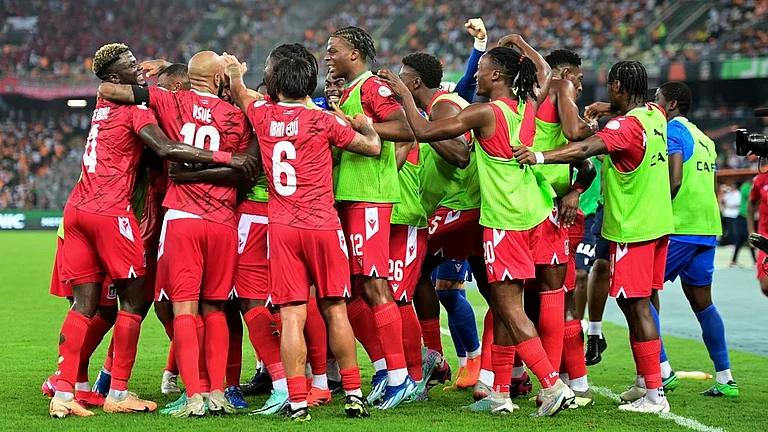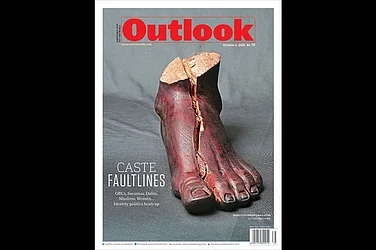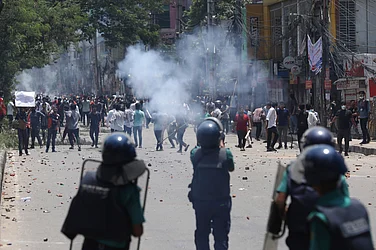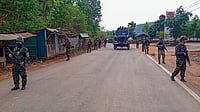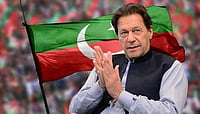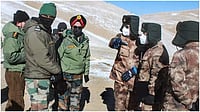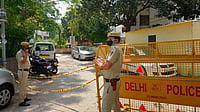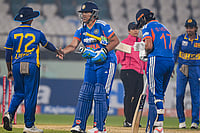JUSTICE was not denied. But it was definitely delayed. The survivors of the worst-ever caste carnage in Uttar Pradesh's Kumaon hills—the infamous Kafalta massacre—had to wait 17 years for justice, and when it fina-lly came, they had little to cheer about.
As the case drifted from one court to another, the Dalits, also known as Shilpkars in Kumaon, waited helplessly. When the lower court and the high court acquitted the accused for want of "clinching evidence", the politicians took over. Of course, the tall claims and assurances of the political leaders remained just that—false promises. It has been a lonely uphill struggle for the Dalits.
Last month, when the Supreme Court set aside the decisions of the lower court and the high court and sentenced 16 persons, all from the upper castes, to life imprisonment for killing 14 Dalits in Kafalta in 1980, nobody was there to share the happiness. There was little celebration in the Shilpkar basti of Biralgaon, home to the victims. Even the capital's news-hungry media did not find it worth reporting. The landmark judgement by Justices M.K. Mukharjee and B.N. Kripal was mentioned only in some local dailies.
Kafalta made headlines in the summer of 1980 when 14 Dalits of Biralgaon village were massacred by upper caste Thakurs. Newshounds and politicians rushed to this remote village tucked away in Sult patti in Almora district. The incident only highlighted the tenuous relationship between Shilpkars and caste Hindus.
The massacre was triggered off unwittingly by a marriage party. On May 9, 1980, the baraat of Shyam Prasad—Lohar by caste—was stopped by some women when it was passing through Kafalta village. The women asked the bridegroom to get down from the doli (palanquin) and walk through the village as a mark of respect to lord Badrinath. Since the temple was at the other end of the village, the Dalits refused to oblige and argued that the bridegroom would disembark only in front of the temple.
Trouble erupted when the women called out the men and Khimanand, an armyman who was on vacation in the village, forcefully upturned the doli. Khimanand was a Brahmin and his act upset the Dalits. In the resultant scuffle, Khimanand was stabbed and died of his injuries.
In retaliation, the Thakurs and Brahmins turned their ire on the Dalits. To save their lives, the baraatis rushed to Nari Ram's house, the only Harijan family of the village, and bolted themselves in. The Thakurs gheraoed the house, locked it from outside and broke open the roof of the house. They threw in a pile of dried pine leaves, wood and kerosene from the roof and set the house on fire.
Six Dalits were charred to death and the others who tried to escape through the windows were chased in the fields and killed with sticks and stones. The toll mounted to 14—all Dalits. Shyama Prasad, the bridegroom, and a handful of baraatis somehow managed to escape.
Among them was Jagat Prakash who was then 16 years old. Today, after 17 years, he calmly recalls how he nearly lost his life when the Thakurs tried to throw him into the fi re. "After running for a while I lost my breath and the Thakurs caught up with me. They brought me to the village and almost threw me into the burning house. A local Thakur shopkeeper, Harak Singh, stopped the angry mob and saved my life." Jagat Prakash was locked inside a cattleshed. When he was rescued by the police three days later, he remembers seeing a row of dead bodies. During the days in Thakur custody, he was too shocked to eat anything.
Of the people killed, 10 hailed from the same family. The rest were relatives. Seventeen years is a long time and even if the wounds have healed, the scars remain. Squatting in front of their modest homes, the widows of Kafalta and other victims are an alienated lot. A natural trench in the hill divides the village into two separate worlds—that of the Dalits and the upper castes. And even though the Supreme Court verdict is in the Dalits' favour, it will hardly bridge the social gulf. In fact, some villagers are apprehensive that the Thakurs might retaliate. Ganguli Devi (65) whose husband Bir Ram and his two elder brothers, Ban Ram and Gusain Ram, were killed in Kafalta, pleads with folded hands and tears in her eyes: "My son should not be harmed. He runs a small studio nearby. I feel restless till he comes back in the evening. They (the upper castes) may harm him. I've brought up my children with great difficulty." The fears are not entirely unfounded. The upper castes, say the Dalits, never lose an opportunity to remind them of Kaf-alta. Says Gopal Ram, 49, who lost his father in the massacre: "Whenever there is a fight, the Brahmins shout at us. 'Dumaro, tum Kafalta bhuli gechha, phir kar dyol usse ham (have you forgotten the Kafalta incident? We will repeat the massacre)'." The villagers allege that despite assurances from then home minister Giani Zail Singh, who visited Biralgaon after the massacre, they are yet to get land in compensation. "Only this year the patwari measured the land but it has not been given to us as yet," complains Gopal.
On the other side of the fence, there is a lot of sympathy for the Thakur convicts. The upper castes comprise more than 95 per cent of the total population of Uttarakhand. A majority of the people in Almora, Ranikhet and Nainital expressed their unhappiness over the judge-ment. The general refrain is:
"All the accused are very old now. What is the point in putting these old men in jail?" "The old men in jail", however, are far from remorseful. Pleading innocence, they maintain they have been falsely implicated. Of the 16 accused, three have already died. The police picked up only eight Thakurs. The rest are in Delhi—and no, they have not gone into hiding. One of the accused, Khyali Ram, who has not yet been arrested, even visited the Outlook office and said: "I am not going to run away. But I am absolutely innocent. I am only worried about my children who are very young. They will become destitutes because there is nobody to feed them." None of the accused has any criminal background, Kafalta apart, but they cer
tainly have a strong caste bias. Says Gopal Singh (66), one of the persons who torched Nari Ram's house: "I don't think the caste system is bad. But now the government is saying untouchability should not be encouraged, what can I say?" Gopal Singh and Kunwar Singh (67) surrendered after they heard of the judgement.
But apart from a bout of sympathy for these Thakur convicts, the reaction has been low key. Observers say the RSS, which is preaching its new-found theory of a larger Hindu brotherhood, is responsible for this. At Dotiyal village near Maanila, a Brahmin, who refused to give his name, put it thus: "There is no reaction to the judgement because, after all, the Harijans are also part of our Hindu society. Had it been some other people, there would definitely have been a backlash." After the Ramjanmabhoomi-Babri Masjid dispute, the saffron brigade set up a strong base in the UP hills. It also capitalised on the anti-Mulayam Singh Yadav sentiments during the anti-reservation movement. During 1994's anti-reservation movement, the rift between the upper castes and Dalits widened. Publicly, the demand was to abolish 27 per cent reservation for OBCs as they comprise only 2 per cent of the hill population. But the anti-Dalit overtones of the movement ran deeper.
After the anti-reservation stir, the hill people gathered to seek a separate state of Uttarakhand—a demand that suited all political parties. But the Dalits and OBCs never became a part of the movement because they knew that Uttarakhand would essentially be an upper-caste state.
The judgement may have done little to narrow the chasm between caste Hindus and Dalits, but it will surely go down in the history of Uttarakhand as a victory for the voiceless and alienated Dalits.







